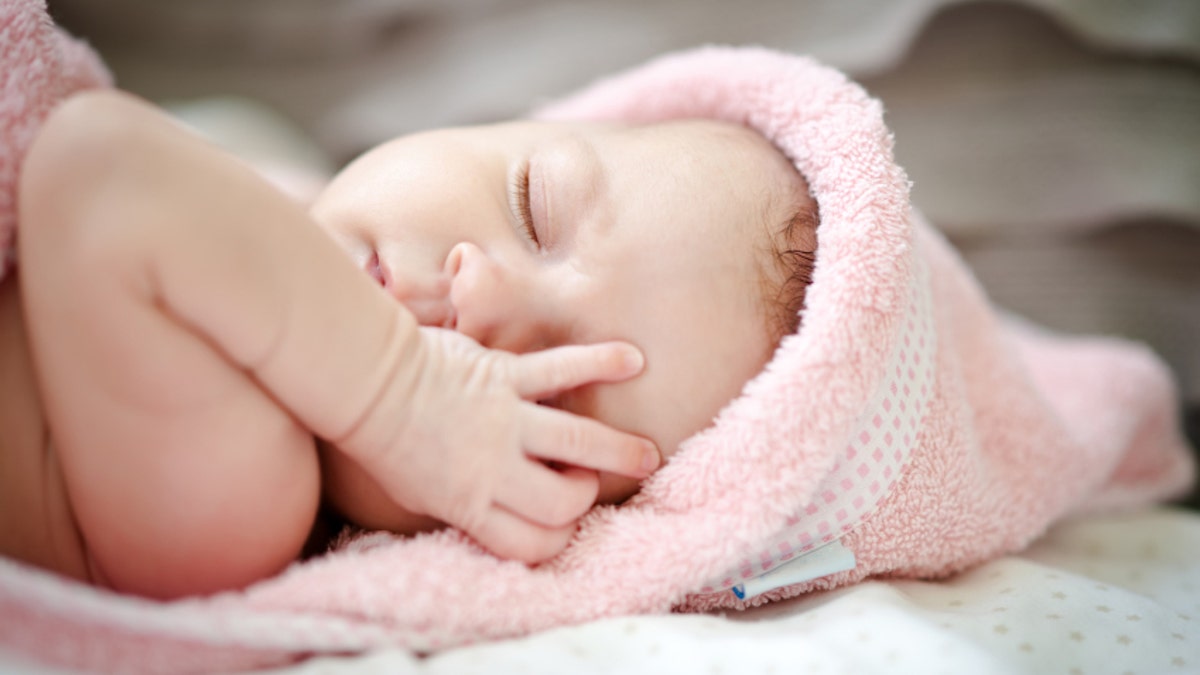
Parents who search the Internet for advice on how to put their infants to sleep may often find misinformation, a new study suggests.
The American Academy of Pediatrics (AAP) and other experts have long had recommendations on how to cut the risk of sudden infant death syndrome, or SIDS. They say parents should always put infants on their backs to sleep - in a crib with a firm mattress, with no soft objects around them.
In the U.S., the "Back to Sleep" public education campaign has been credited with cutting SIDS - also known as "crib death" - by more than 50 percent since 1994.
But SIDS still kills about 2,500 babies each year in the U.S., mostly infants who are between two and four months old.
For the new study, researchers wanted to see how often online information on infant sleep jibed with the AAP recommendations.
So they did a Google search using 13 different terms, like "infant sleep position" and "infant sleep surface."
Of the 931 relevant websites that popped up, only 61 percent gave accurate information.
"We were not that surprised, since everyone knows a lot of information on the Web is wrong," said senior researcher Dr. Rachel Y. Moon, of Children's National Medical Center in Washington, D.C.
"But we wanted to quantify what we suspected to be true," she told Reuters Health.
Accuracy did vary widely based on the type of website, Moon's team reports in The Journal of Pediatrics.
Government websites did the best job, the researchers say. Of 83 government sites, 72 gave accurate information. Some sites, Moon noted, were not updated often and had outdated information.
Blogs, personal websites and sites that review retail products were among the least reliable sources. Of all relevant blogs, for example, just 31 percent gave accurate information.
"I'd tell parents to be careful about the sources of the information you're looking at," Moon advised.
Government sites like Medline Plus (www.nlm.nih.gov/medlineplus) and Healthfinder (healthfinder.gov) are good sources, according to Moon's team. And they say pediatricians can help by directing parents to specific sites like those.
"I think this is a really important study," said Dr. Henry F. Krous, a SIDS researcher and professor at the University of California, San Diego School of Medicine.
"More and more people, and especially young parents, will be using the Internet to find this type of information," noted Krous, who was not involved in the study.
He agreed with the recommendation that pediatricians give parents advice on specific websites.
Confirm information
Krous also suggested that when parents do find information on safe infant sleeping online, they "go the next step and confirm it with your health provider regarding your baby."
Moon advised steering clear of commercial websites, such as those from retailers selling infant products. She and her colleagues found 185 relevant websites from companies or interest groups; 54 of them - or 29 percent - gave flawed information.
According to the AAP, infants' cribs should be free of soft objects like blankets, pillows and stuffed animals. And parents should not use "bumper pads" on the sides of the crib.
Those products, which tie to the crib slats, are marketed for preventing head injuries and keeping babies' limbs from getting trapped. But the AAP says bumper pads may raise the risk of suffocation or strangulation.
Krous said parents should be wary of any site that promotes devices that are supposed to keep babies on their backs during sleep.
"We have never recommended any device for promoting back-sleeping," Krous told Reuters Health.
Bed-sharing not recommended
The study used a single definition of "accuracy" - whether information conformed to AAP recommendations.
"There's always room for debate on specific recommendations," Moon said.
For example, the AAP says parents should not have their infants sleep in bed with them.
A recent study of more than 3,100 U.S. infants who died of SIDS found that 70 percent were sleeping on a bed or other surface "not intended for infants" - most often with an adult or another child.
But many breastfeeding advocates believe "bed-sharing" makes breastfeeding easier and helps moms keep it up long-term.
"Not all bed-sharing is the same," Krous noted.
That is, having your healthy-sized 11-month-old on the opposite side of your king-sized bed is different from lying next to your three-month-old. And cases of SIDS or other accidental deaths have often involved factors other than bed-sharing - like an intoxicated parent.
However, Krous said, many studies have pointed to bed-sharing as a "big risk factor" for SIDS. There is "no question," he added, that putting your infant to bed as the AAP recommends is the safest course.
For breastfeeding moms, Krous noted, there are devices that look like bassinets and attach to the bed - allowing parents to be close without the risk of rolling over onto the baby.
